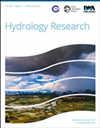气候变化对地中海东南部加沙地区时空干旱的影响分析
IF 2.4
4区 环境科学与生态学
Q2 Environmental Science
引用次数: 0
摘要
加沙地带地中海东南部地区显示出气候变化影响下干旱模式不断演变的痕迹。对1974年至2021年48年期间八个气象站的降雨数据进行的分析显示,加沙地带降雨量的时空分布存在明显变化。丰水月份的月总降雨量趋势分析表明,在2月、3月、4月和11月期间,每个气象站的降雨量呈下降趋势,比例在−16%至−62%之间,到10月,降雨量呈上升趋势,约为35%至141%。然而,除Nussirat外,所有气象站的1月都显示出约1-27%的增长趋势,Nussirats的下降率约为−7%,而12月则是指加沙北部地区的增长趋势约为5-27%,加沙地带南部地区的下降趋势为−2%至−17%。使用SPI指标的干旱分析指的是1990年、1999年、2010年和2014年加沙地带干旱的显著发展,发生了重大事件,特别是每月的干旱。本文章由计算机程序翻译,如有差异,请以英文原文为准。
Analysis of the climate change impact on the spatiotemporal drought in the Gaza region of the southeastern Mediterranean
The southeast Mediterranean region of the Gaza Strip is showing traces of evolving drought patterns driven by the impacts of climate change. The analysis of rainfall data at eight meteorological stations for a period extending over 48 years from 1974 to 2021 shows obvious variations in the spatiotemporal distribution of the rainfall over the Gaza Strip. The total monthly rainfall trend analysis for the wet months indicates a decreasing trend during February, March, April, and November with a ratio ranging between −16 and −62% and an increasing trend of about 35 and 141% through October at each of the meteorological stations. However, January shows an increasing trend of about 1–27% at all meteorological stations except Nussirat where a decline of about −7% is recorded while December refers to an increasing trend by about 5–27% in the north area of Gaza and declining trend of −2 to −17% over the southern region of the Gaza Strip. The drought analysis using the SPI indicator refers to a significant development of drought during the years 1990, 1999, 2010, and 2014 in the Gaza Strip with a major incident of occurrence where specifically, the monthly drought in term.
求助全文
通过发布文献求助,成功后即可免费获取论文全文。
去求助
来源期刊

Hydrology Research
Environmental Science-Water Science and Technology
CiteScore
5.30
自引率
7.40%
发文量
70
审稿时长
17 weeks
期刊介绍:
Hydrology Research provides international coverage on all aspects of hydrology in its widest sense, and welcomes the submission of papers from across the subject. While emphasis is placed on studies of the hydrological cycle, the Journal also covers the physics and chemistry of water. Hydrology Research is intended to be a link between basic hydrological research and the practical application of scientific results within the broad field of water management.
 求助内容:
求助内容: 应助结果提醒方式:
应助结果提醒方式:


